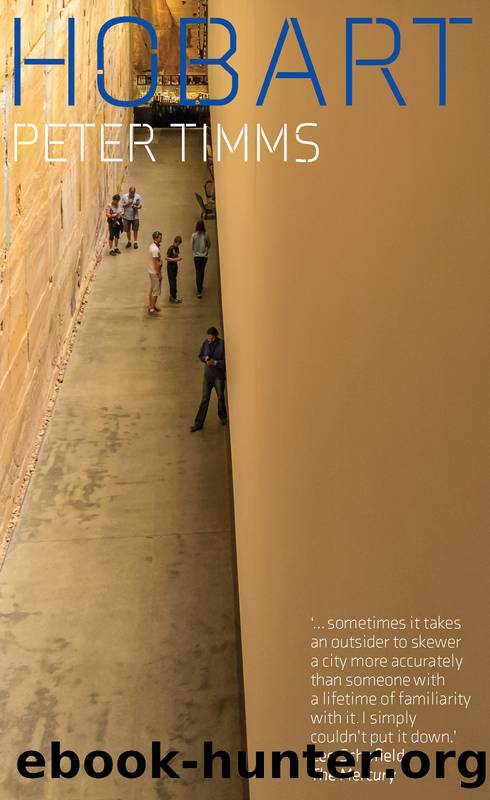Hobart by Peter Timms

Author:Peter Timms
Language: eng
Format: epub
Publisher: NewSouth Publishing
Published: 2020-09-25T00:00:00+00:00
Today, despite Aboriginal political and social issues being so prominent in the news (or perhaps partly as a result), neither the way these people lived before European settlement nor the epic tale of their clash with European culture have succeeded in firing the publicâs imagination in the way convict history has. Unlike the convicts, Indigenous peoples left few traces on the landscape that look interesting from the windows of a passing bus. Tasmania has the worldâs best collection of Holocene-period middens, for example, but a midden is just a heap of shells to the uninformed. It does not signal any event and it cannot be connected to any individual names, and events and names are what tourists need to latch on to when they seek out connections with the past. While you might admire baskets and shell necklaces, you must go to a museum or gallery to do so, which presupposes a certain level of prior interest and knowledge. It also presupposes a museum. Although that shrine to the convicts, Port Arthur, is Tasmaniaâs most visited tourist attraction and one of its biggest money-earners, there is no major institution devoted to Indigenous history and culture. A display at the Tasmanian Museum and Art Gallery, although informative, can hardly do the subject justice. On the face of it, this is astonishing in a city that virtually lives off its history.
When you think about it, however, Port Arthur, less than two hoursâ drive from Hobart, was already there, with drama and turmoil oozing from every stone. As spectacle its ruins are hard to beat. So making it accessible was easy. Furthermore, the convicts exist solely in the past, safely out of contention, leaving tourists free to imagine them in any way they like. A centre for Aboriginal history and culture, on the other hand, would have to be built from scratch and would be subject to the labyrinthine intricacies of modern Indigenous politics.
Sadly, therefore, this large and crucial chunk of Tasmaniaâs history remains fairly much the preserve of ideologues and academic historians. The rest of us must read books and try to imagine. It is enough that civic functions begin with the guests piously âacknowledgingâ the Mouheneenner people, serenely confident that no Mouheneenner will appear unexpectedly in the doorway brandishing a spear to spoil their evening.
If Aboriginal people remain peripheral to the tourist industryâs reinvention of the past, convicts occupy centre stage. In one of those dramatic reversals mentioned earlier, Tasmanians have now decided to bring them back from the dead â with a vengeance. Convicts have become almost an obsession.
In the early 1850s, some three-quarters of adult males in Van Diemenâs Land were convicts or ex-convicts.4 In comparison to New South Wales, it was a huge proportion, and it set the mood of Tasmanian society for generations. Long after transportation had ended, and military dictatorship had blossomed into a free democratic state, this continued to be overwhelmingly a prisoner society.
Because every constructive innovation to improve society was brought up short against
Download
This site does not store any files on its server. We only index and link to content provided by other sites. Please contact the content providers to delete copyright contents if any and email us, we'll remove relevant links or contents immediately.
